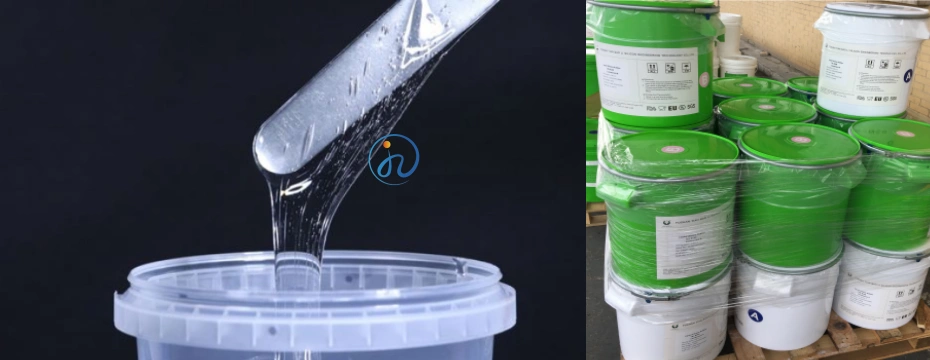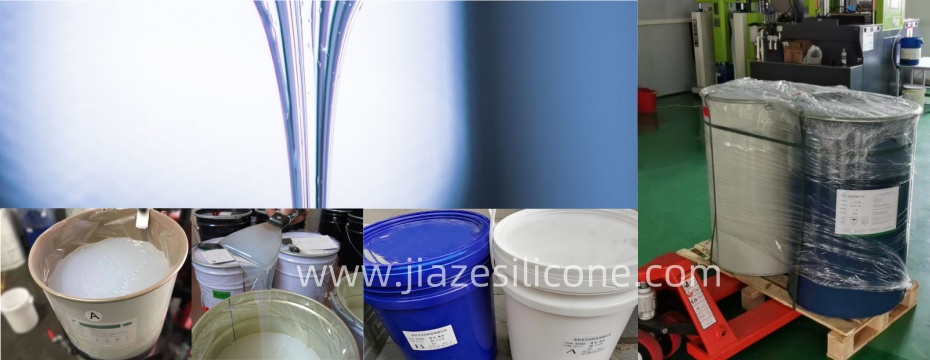Table of Contents
ToggleLiquid Silicone Rubber (LSR) has become one of the most widely used elastomers in industries like medical devices, automotive, electronics, baby care, and consumer products. Buyers and engineers often ask: “What is the cost of liquid silicone rubber?”

The answer is not simple. The cost depends on multiple factors including raw material pricing, processing, mold tooling, part design, and production volumes. In this article, we will provide a comprehensive cost breakdown of liquid silicone rubber to help procurement specialists, engineers, and business owners make informed decisions.
1. Understanding Liquid Silicone Rubber (LSR)
Before analyzing cost, it is important to understand what liquid silicone rubber is.
- Definition: LSR is a two-component platinum-cured silicone elastomer. It is delivered as liquid A/B parts and cured by heat during injection molding.
- Properties: Excellent biocompatibility, flexibility, chemical resistance, durability, and ability to withstand extreme temperatures (-50°C to +250°C).
- Applications: Medical tubing, CPAP masks, baby pacifiers, automotive seals, keypads, wearables, LED optics, and food-contact products.
Because of these unique features, LSR parts are often more expensive upfront but deliver long-term value due to durability, safety, and performance.
2. Raw Material Cost of Liquid Silicone Rubber
The first element of cost is the price of the LSR raw material itself.
- Average Market Price: In 2025, general-purpose liquid silicone rubber costs $10–$20 per kilogram, depending on supplier, grade, and order volume.
- Medical Grade LSR: Higher purity, biocompatibility, and FDA/ISO certifications raise the cost to $25–$40 per kilogram.
- Specialty LSR (e.g., optical, self-lubricating, flame-retardant): Pricing can range from $30–$50 per kilogram or more.
Raw material prices fluctuate based on:
- Supplier (Wacker, Dow, Momentive, Shin-Etsu, etc.)
- Minimum order quantities
- Regional supply and demand
- Additives (color masterbatch, special modifiers)
Key Insight: Raw material is only one part of the cost. Processing and tooling often contribute more significantly.
3. Processing Costs in LSR Injection Molding
LSR is most commonly processed by injection molding, which involves specialized equipment and technical expertise. Processing costs typically include:
- Machine Costs: LSR injection molding machines are specialized with dosing pumps, static mixers, and temperature-controlled molds. The operating cost of a press can range $40–$100 per hour.
- Cycle Time: LSR cures quickly, often in 20–60 seconds depending on part thickness. Faster cycle times reduce per-part costs.
- Labor: Automated molding systems reduce labor, but setup, quality inspection, and packaging add expenses.
- Energy Costs: Heating molds and running dosing units also impact processing costs.
On average, processing adds $0.10–$0.50 per part, depending on complexity and batch size.
4. Tooling Costs for LSR
Tooling is one of the largest upfront investments when manufacturing with LSR.
- Simple Molds (one cavity, basic geometry): $5,000–$10,000
- Medium Complexity (multi-cavity, undercuts, automation): $20,000–$50,000
- High Precision Medical or Optical Molds: $50,000–$100,000+
Factors affecting mold cost:
- Number of cavities (single vs. multi-cavity)
- Part geometry (thin walls, micro features, complex shapes)
- Surface finish requirements (optical clarity, matte texture, etc.)
- Mold steel material (hardened steel for durability)
Although mold tooling is expensive, the cost per part decreases with higher production volumes.
5. Part Design and Volume Impact on Cost
The cost of liquid silicone rubber products is highly influenced by design and order quantity.
- Small Parts (like seals or O-rings): Low material consumption but require precision tooling.
- Large Parts (like baby bottles or medical masks): Higher material usage, longer curing times.
- Low Volume Orders: Higher per-part cost because tooling and setup costs are spread across fewer parts.
- High Volume Orders: More cost-efficient per unit because fixed costs are distributed across thousands or millions of parts.
Example:
- 1,000 pieces of a small medical LSR component may cost $2–$4 per piece.
- 100,000 pieces may reduce the cost to $0.50–$1.00 per piece.
6. Additional Cost Factors
Beyond raw materials, processing, and tooling, other factors contribute to the cost of LSR parts:
- Regulatory Compliance: FDA, ISO 10993, USP Class VI certifications add testing and documentation costs.
- Post-Processing: Deflashing, laser marking, assembly, and sterilization increase costs.
- Packaging: Sterile packaging for medical devices or custom branding for consumer goods adds expenses.
- Shipping & Logistics: LSR products are lightweight but may require cleanroom conditions during transport.
7. Comparing LSR with Other Materials
Buyers often compare LSR costs with alternatives such as:
- Thermoplastics: Lower material and tooling costs but inferior durability and heat resistance.
- High Consistency Rubber (HCR): Cheaper material but slower processing and less precision.
- TPE/TPR: Lower cost but limited biocompatibility and aging resistance.
While LSR is more expensive upfront, its long product lifespan and performance advantages often justify the investment.
8. Cost-Saving Strategies When Using LSR
To optimize costs, manufacturers and buyers can:
- Increase Production Volumes to distribute tooling costs.
- Design for Manufacturability (avoid unnecessary complexity).
- Use Multi-Cavity Molds to boost productivity.
- Collaborate with Experienced LSR Molders for process optimization.
- Choose the Right LSR Grade (not over-specifying when unnecessary).
9. Estimated Total Cost Examples
Here are some real-world cost estimates for different types of LSR products:
- Medical CPAP Nasal Pillow:
- Raw material: $0.50–$1.00 per piece
- Processing: $0.20–$0.50 per piece
- Tooling: $30,000 mold amortized over 100,000 parts
- Final cost: $1–$2 per piece
- Baby Pacifier:
- Raw material: $0.30–$0.60 per piece
- Processing: $0.10–$0.30 per piece
- Tooling: $15,000 mold amortized
- Final cost: $0.50–$1.00 per piece
- Automotive Gasket:
- Raw material: $1.00–$3.00 per piece
- Processing: $0.50–$1.50 per piece
- Tooling: $40,000 mold amortized
- Final cost: $2–$5 per piece
10. Conclusion: Is Liquid Silicone Rubber Worth the Cost?
The cost of liquid silicone rubber depends on many variables, including material grade, tooling, processing, and production volume. While LSR is more expensive than many alternative materials, its superior performance, safety, and long-term durability make it a cost-effective choice for industries that demand high quality.

For businesses, the best approach is to:
- Request a detailed quotation from an experienced LSR manufacturer
- Balance upfront tooling investment with long-term production savings
- Consider total cost of ownership, not just material price
By understanding the factors that influence cost, buyers can make smarter sourcing decisions and achieve better value when using liquid silicone rubber.